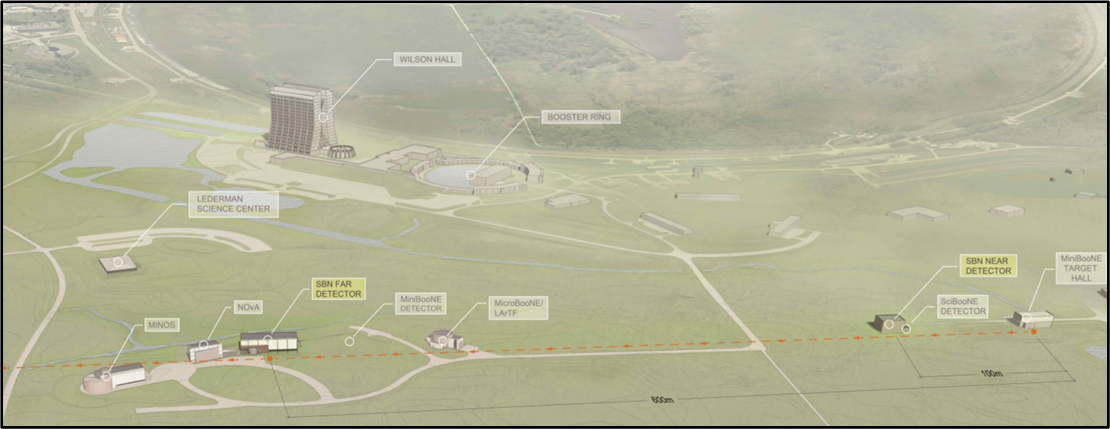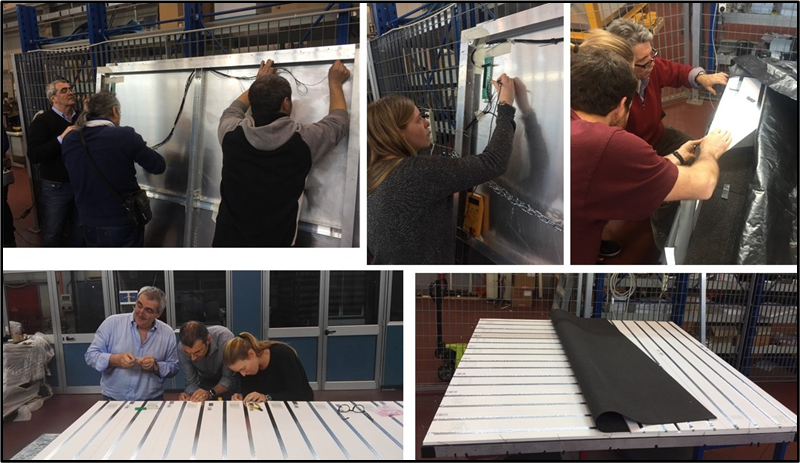PageContent
Short Baseline Neutrino (SBN)

The international Short Baseline Neutrino (SBN) program at Fermilab will study the properties of neutrinos with a particular focus on the change of neutrino flavor during its motion through space and matter.
This program is a joint proposal developed by three scientific collaborations in order to give an answer about the existence or not of sterile neutrinos at the eV energy scale. The main idea is to look for any oscillations induced by the sterile neutrino in the νe appearance channel and νμ disappearance one, along the Neutrino Beam Booster (BNB).
The common scientific objectives are highlighted in the proposal available on arXiv.
The three detectors used by the collaborations are all based on liquid argon time projection (TPC) chambers.
-
Short Baseline Near Detector (SBND): located at 110 meters from the BNB target and it is a LAr TCP with an overall mass to 260 tons. It will act as a Near Detector along the beam line.
-
MicroBooNE: located at 470 meters from the BNB target, it consists of a liquid argon TPC with a mass of 170 tons. The cryostat was filled in 2015 and the detector is currently in operation: it performs neutrino cross section measurements with the aim of investigating the inexplicable excess of low energy electromagnetic events observed by MiniBooNE.
-
Short-Baseline Far Detector (ICARUS T-600): consisting of two 300-ton LArTPC modules, it will be positioned 600 meters from the BNB target and will serve as the Far Detector. The T-600 operated at the Gran Sasso National Laboratories from 2010 to 2014 and, after an upgrade at CERN, is being installed and put into operation at Fermilab.
Bologna Activities
The detectors are placed at the surface with only few meters of concrete acting as a shield from cosmic radiation. For such a reason a system is needed to identify the atmospheric muons passing through the TPC.
The Bologna group participated in designing and constructing a system called Top Cosmic Ray Tagger (CRT). Built at the National Laboratories of Frascati, it will be positioned as a roof on ICARUS-T600 allowing for the identification and elimination of the signals induced by the muons passage.
Each module of the Top CRT measures the position and transit time of muons. The light signal produced in two-meter long and approx. 20 cm wide scintillator bars is read out by SiPM glued to WLS fibers. The first prototype was built in Bologna starting from the construction of the aluminum boxes, the fibers gluing and the characterization of the used SiPM.

Moreover the Bologna group gave an important contribution in the construction of 125 CRT modules at Laboratori Nazionali di Frascati: functionality tests and efficiency measurements were performed for all the constructed modules.
SBN Bologna Group
+ Show Useful Links












